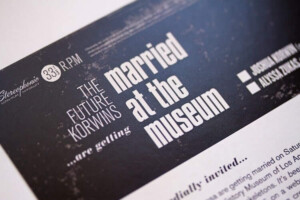When a cultural organization uses its space for third-party events, it’s opening its doors to a world of potential donors. I started my career working as a political fundraiser helping a New York City elected official run for re-election. It was an amazing experience that gave me a solid foundation in event planning and development. Once the candidate I was working for was re-elected and there was no need for campaign staff any longer, I secured a position in the development office of a Manhattan Museum. My background was in theatre so working in an arts-focused environment felt like a natural fit.
After a few years, there was a need for additional staff in the Facility Rental Department. I was transferred over to help develop a marketing strategy and build the business. As I reflect back, I am very impressed that twelve years ago Museum leadership saw the need to focus this type of attention on facility rental marketing.
After transitioning to the new department, I was struck that there wasn’t greater integration between the Development Department and Facility Rentals. As a consultant working with cultural institutions across the nation, I am surprised at the gap that still exists between the two departments.
Interdepartmental logistics meetings are often done at museums so that everyone is aware of all of the moving parts in a given week or month. It seems that even if Facility Rentals reports to a department other than Development, the Facility Rental staff person should be attending Development staff meetings on a monthly basis to review inquiries, potential leads, and upcoming booked events. More likely than not, there are connections that can be made. If the communication does not exist between these two departments, opportunities will be lost.
Technology also plays a big part in keeping these two departments divided. The database systems that are used for fundraising have event functions, but do not generally apply to the facility rental business. It doesn’t make much sense to purchase separate software for facility rentals that does not integrate with the rest of the organization. Therefore, many Facility Rental Departments are capturing data in excel spreadsheets and not necessarily cross-referencing leads with the institutions database.
Some institutions require a membership in order to host an event at the venue. I am not so sure this is the best way to develop a relationship that has longevity and doesn’t disappear following the event. The candidate I worked for years ago was known for her incredible fundraising abilities; she told me the secret to success was building trust; people don’t give money to those they don’t trust. I think the possibility of an event client contributing to an institution once they have developed a sense of trust with the staff and an emotional connection to the space is great.
So, how do you turn an event client into a donor? The follow up strategy is paramount in moving the relationship to the next level. For example, if a couple gets married at the venue, they should be gifted a free membership for the year following their wedding. If the institution has a restaurant on site, send the couple a voucher for complimentary champagne on their anniversary. It is important to continue reinforcing the emotional connection that the individuals have with the institution and in turn, the mission.

Renting space for third-party events has proven to be profitable for many institutions across the globe. The next step in continuing to develop successful rental programs for not for profit organizations will be achieving the delicate balance in transitioning clients to becoming active donors. I look forward to watching the importance of facility rentals in cultural institutions continue to evolve!

